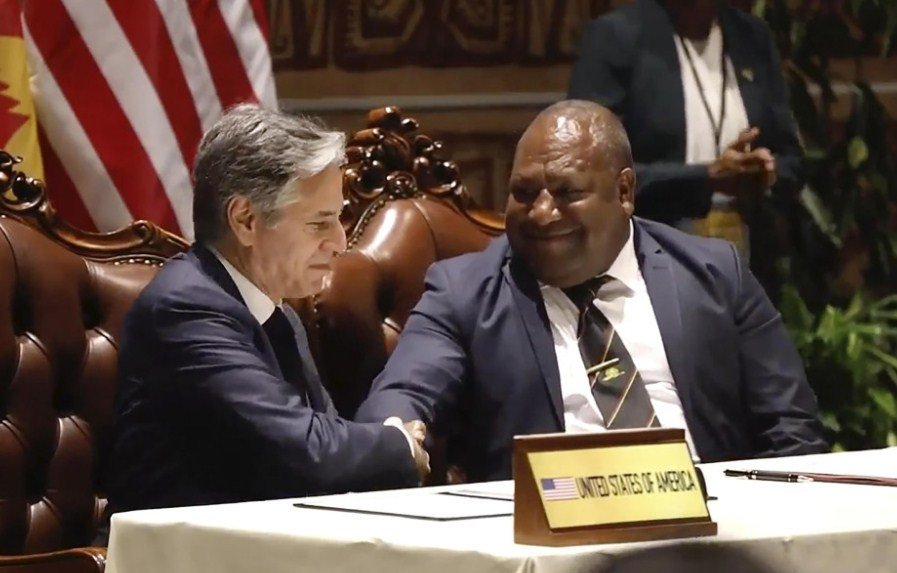Papua New Guinea (PNG) is in advanced talks with Chinese banks to secure loans worth $3.5 billion to fund its stakes in two liquefied natural gas (LNG) megaprojects, according to Reuters. The move comes amid growing competition between the US and China for influence in the Pacific region.
PNG aims to boost its LNG exports
PNG is one of the world’s poorest countries, but it has vast natural gas reserves that could transform its economy. It already operates one LNG project, the ExxonMobil-led PNG LNG, which started production in 2014 and exports gas to Japan, China and Taiwan.
Now, PNG wants to expand its LNG exports by participating in two new projects: the Total-led Papua LNG and the ExxonMobil-led P’nyang LNG. Together, these projects could more than triple PNG’s LNG output from the current 8 million tonnes per year to 26 million tonnes per year by the late 2020s.
However, PNG needs to raise funds to pay for its equity stakes in the projects, which amount to 22.5% for Papua LNG and 25% for P’nyang LNG. The government has estimated that it needs about $3.5 billion to finance its shares, which it hopes to repay from future LNG revenues.
China offers loans amid US rivalry
To secure the funding, PNG has been in talks with several Chinese banks, including the Industrial and Commercial Bank of China, the China Development Bank and the Export-Import Bank of China, Reuters reported, citing unnamed sources. The negotiations are said to be at an advanced stage, but no final deal has been reached yet.
PNG’s Prime Minister James Marape has said that he prefers to borrow from China because it offers lower interest rates and longer repayment periods than other lenders. He has also said that he welcomes Chinese investment in PNG’s infrastructure and development projects.
However, PNG’s turn to China has raised concerns among its traditional allies, especially the US and Australia, who see the Pacific region as a strategic battleground. The US and Australia have been trying to counter China’s growing influence in the region by offering their own aid and security assistance to PNG and other Pacific island nations.
In May 2023, US Secretary of State Antony Blinken visited PNG and signed a bilateral defense cooperation agreement and a maritime security agreement with Marape. The US also pledged to support PNG’s COVID-19 response and its economic recovery.
PNG faces challenges and opportunities
PNG’s pursuit of Chinese funding for its LNG projects is not without risks and challenges. Some of the potential pitfalls include:
- The possibility of debt distress if PNG fails to repay the loans or if the LNG projects face delays or cost overruns.
- The risk of political backlash from the US and Australia, who may view PNG’s alignment with China as a threat to their interests and security in the region.
- The need to balance the environmental and social impacts of the LNG projects with the economic benefits, especially for the local communities affected by the gas extraction and processing.
On the other hand, PNG also stands to gain from its LNG ambitions. Some of the potential benefits include:
- The opportunity to diversify its economy and reduce its dependence on mining and agriculture, which are vulnerable to commodity price fluctuations and natural disasters.
- The chance to create jobs and income for its population, which suffers from high poverty and unemployment rates.
- The ability to leverage its LNG exports to strengthen its diplomatic and trade relations with key markets, such as China, Japan and Taiwan.
PNG’s LNG projects are among the most ambitious and complex in the world, and they will have a significant impact on the country’s future. PNG’s decision to seek Chinese funding for its stakes in the projects reflects its desire to maximize its potential as a gas exporter, but also its exposure to the geopolitical rivalry between the US and China in the Pacific region.

